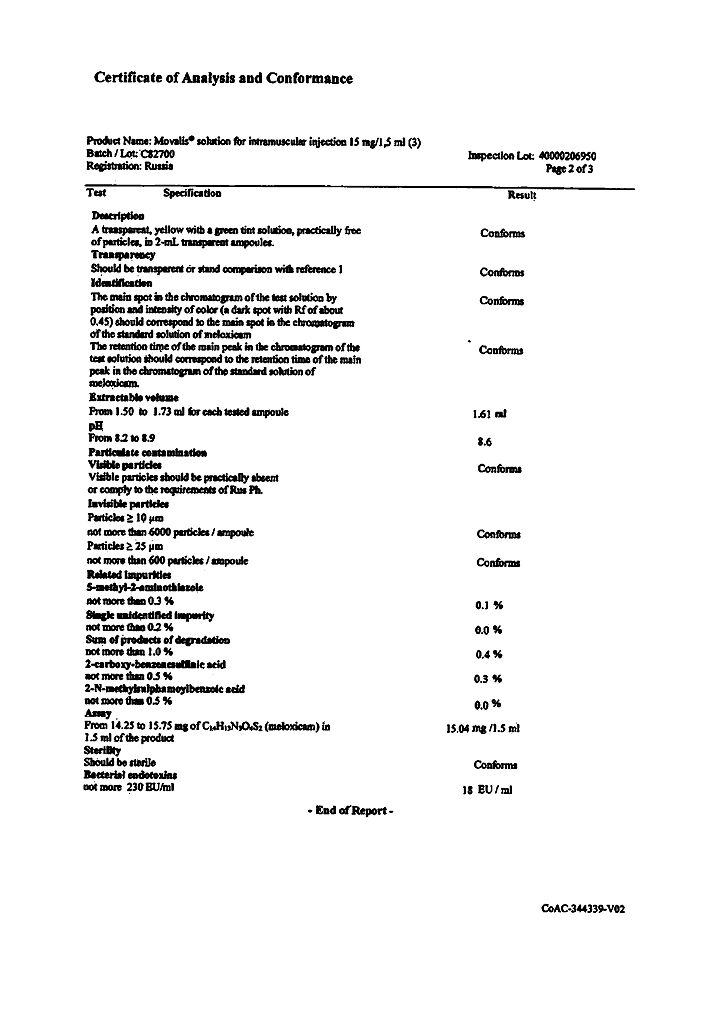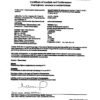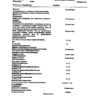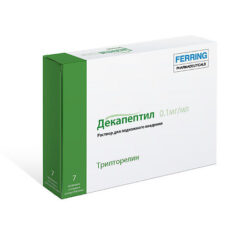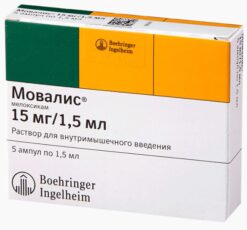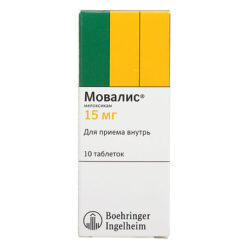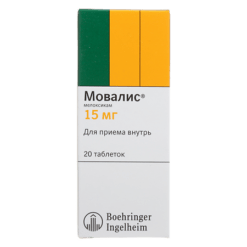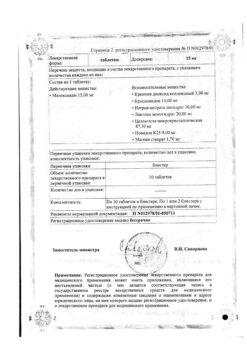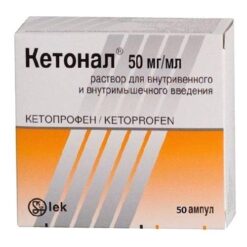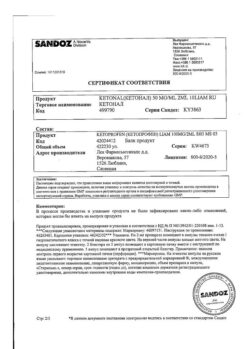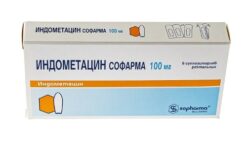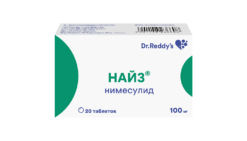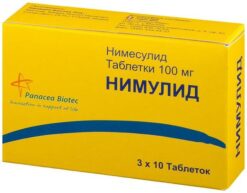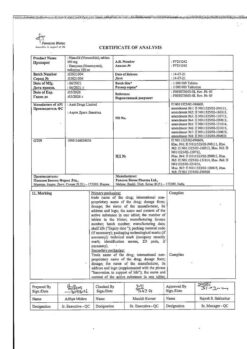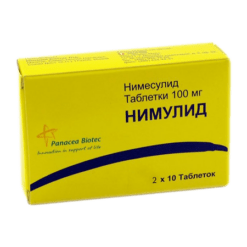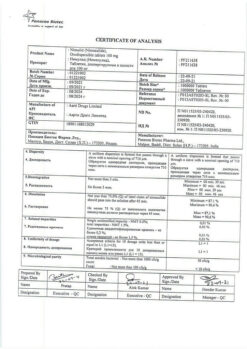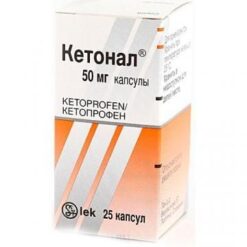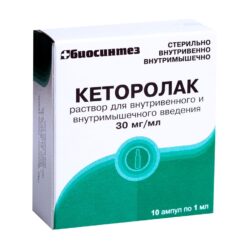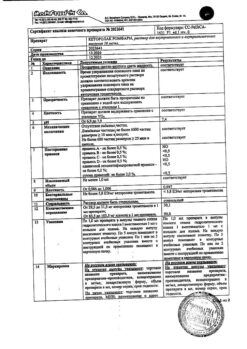No products in the cart.
Movalis, 15 mg/1.5 ml 1.5 ml 3 pcs.
€50.90 €47.36
Description
Pharmgroup:
Non-steroidal anti-inflammatory drug – NSAID.
Pharmic action:
Movalis is a non-steroidal anti-inflammatory drug, refers to enolic acid derivatives and has anti-inflammatory, analgesic and antipyretic effects. The pronounced anti-inflammatory effect of meloxicam was established in all standard models of inflammation. The mechanism of action of meloxicam is its ability to inhibit the synthesis of prostaglandins – known mediators of inflammation.
In vivo meloxicam inhibits prostaglandin synthesis at the site of inflammation to a greater extent than in the gastric mucosa or kidney.
These differences are due to more selective inhibition of cyclooxygenase-2 (COX-2) compared to cyclooxygenase-1 (COX-1). Inhibition of COX-2 is thought to provide the therapeutic effect of NSAIDs, whereas inhibition of the ever-present COX-1 isoenzyme may cause gastric and renal side effects.
The selectivity of meloxicam against COX-2 has been confirmed in various test systems, both in vitro and ex vivo. The selective ability of meloxicam to inhibit COX-2 was shown when using human whole blood as a test system in vitro. Ex vivo, meloxicam (at doses of 7.5 and 15 mg) was found to be more active in inhibiting COX-2, having a greater inhibitory effect on lipopolysaccharide-stimulated prostaglandin E2 production (COX-2-controlled response) than on thromboxane production involved in blood clotting (COX-1-controlled response). These effects were dose-dependent. Ex vivo, meloxicam at the recommended doses was shown to have no effect on platelet aggregation and bleeding time, in contrast to indomethacin, diclofenac, ibuprofen and naproxen, which significantly inhibited platelet aggregation and increased bleeding time.
In clinical trials, gastrointestinal (GI) side effects were generally less frequent with meloxicam 7.5 and 15 mg than with the other NSAIDs compared. This difference in the frequency of gastrointestinal side effects is mainly due to the fact that such phenomena as dyspepsia, vomiting, nausea, and abdominal pain were observed less frequently while taking meloxicam. The frequency of upper gastrointestinal perforations, ulcers and bleeding associated with the use of meloxicam was low and depended on the size of the dose of the drug.
Pharmacokinetics:
Meloxicam is completely absorbed after intramuscular administration. The relative bioavailability compared to the bioavailability with oral administration is almost 100%. Therefore, no dosage adjustment is required when switching from injectable to oral forms. After administration of 15 mg of the drug intramuscularly, the peak plasma concentration of about 1.62 mcg/ml is reached within about 60 minutes.
Distribution
Meloxicam binds very well to plasma proteins, especially to albumin (99%). It penetrates the synovial fluid, the concentration in synovial fluid is approximately 50% of the plasma concentration. The volume of distribution is low, averaging 11 L. Interindividual variation is 30-40%.
Metabolism
Meloxicam is almost completely metabolized in the liver to form 4 pharmacologically inactive derivatives. The main metabolite, 5′-carboxymeloxicam (60% of the dose value), is formed by oxidation of the intermediate metabolite, 5′-hydroxymethylmeloxicam, which is also excreted, but to a lesser extent (9% of the dose value). In vitro studies have shown that CYP 2C9 plays an important role in this metabolic transformation, CYP 3A4 isoenzyme has additional importance. Peroxidase, the activity of which probably varies individually, is involved in the formation of the other two metabolites (which are, respectively, 16% and 4% of the drug dose).
Elimation
It is excreted equally in the feces and urine, mainly as metabolites. Less than 5% of daily dose is excreted unchanged in feces, the drug is excreted unchanged in urine only in trace amounts. The average half-life of meloxicam is 20 hours. Plasma clearance averages 8 ml/min. Meloxicam exhibits linear pharmacokinetics at doses of 7.5 to 15 mg when administered orally or intramuscularly.
Hepatic and/or renal function deficiencies
Liver function deficiencies and mild to moderate renal failure have no significant effect on the pharmacokinetics of meloxicam.
In terminal renal failure, increased volume of distribution may lead to higher concentrations of free meloxicam, so in these patients the daily dose should not exceed 7.5 mg.
Elderly patients
Elderly patients have slightly lower mean plasma clearance during steady state pharmacokinetics than younger patients.
Indications
Indications
Initial therapy and short-term symptomatic treatment for:
osteoarthritis (arthrosis, degenerative joint diseases);
rheumatoid arthritis;
ankylosing spondylitis;
other inflammatory and degenerative diseases of the musculoskeletal system, such as arthropathy, dorsopathies (for example, sciatica, low back pain, shoulder periarthritis and others), accompanied by pain.
Pharmacological effect
Pharmacological effect
Pharmacotherapeutic group: NSAIDs
Pharmacological action
Movalis® is a non-steroidal anti-inflammatory drug (NSAID), belongs to enolic acid derivatives and has anti-inflammatory, analgesic and antipyretic effects.
The pronounced anti-inflammatory effect of meloxicam has been established in all standard models of inflammation. The mechanism of action of meloxicam is its ability to inhibit the synthesis of prostaglandins, known mediators of inflammation.
Meloxicam in vivo inhibits the synthesis of prostaglandins at the site of inflammation to a greater extent than in the gastric mucosa or kidneys.
These differences are due to more selective inhibition of cyclooxygenase-2 (COX-2) compared with cyclooxygenase-1 (COX-1). Inhibition of COX-2 is thought to mediate the therapeutic effects of NSAIDs, whereas inhibition of the constitutively present isoenzyme COX-1 may be responsible for gastric and renal side effects. The selectivity of meloxicam for COX-2 has been confirmed in various test systems, both in vitro and in vivo. The selective ability of meloxicam to inhibit COX-2 was demonstrated when using human whole blood as a test system in vitro. It was found that meloxicam (in doses of 7.5 mg and 15 mg) more actively inhibited COX-2, having a greater inhibitory effect on the production of prostaglandin E2 stimulated by lipopolysaccharide (reaction controlled by COX-2) than on the production of thromboxane, which is involved in the blood coagulation process (reaction controlled by COX-1). These effects depended on the dose.
Ex vivo studies have shown that meloxicam (at doses of 7.5 mg and 15 mg) has no effect on platelet aggregation and bleeding time.
In clinical studies, gastrointestinal side effects generally occurred less frequently with meloxicam 7.5 and 15 mg doses than with other NSAIDs compared. This difference in the frequency of side effects from the gastrointestinal tract is mainly due to the fact that when taking meloxicam, such phenomena as dyspepsia, vomiting, nausea, and abdominal pain were observed less frequently. The incidence of upper gastrointestinal perforations, ulcers and bleeding associated with meloxicam use was low and dose dependent.
Pharmacokinetics
Suction
Meloxicam is completely absorbed after intramuscular administration. Relative bioavailability compared to oral bioavailability is almost 100%. Therefore, when switching from injection to oral forms, dose selection is not required. After administration of 15 mg of the drug IM, peak plasma concentrations of approximately 1.6-1.8 mcg/ml are achieved within approximately 60-96 minutes.
Distribution
Meloxicam binds very well to plasma proteins, mainly albumin (99%). Penetrates into synovial fluid, the concentration in synovial fluid is approximately 50% of the concentration in plasma. Vd is low, approximately 11 liters. Interindividual differences are 7-20%.
Metabolism
Meloxicam is almost completely metabolized in the liver to form 4 pharmacologically inactive derivatives. The main metabolite, 5′-carboxymeloxicam (60% of the dose), is formed by oxidation of the intermediate metabolite, 5′-hydroxymethylmeloxicam, which is also excreted, but to a lesser extent (9% of the dose). In vitro studies have shown that the CYP2C9 isoenzyme plays an important role in this metabolic transformation; the CYP3A4 isoenzyme is of additional importance. Peroxidase is involved in the formation of the other two metabolites (constituting, respectively, 16% and 4% of the drug dose), the activity of which probably varies individually.
Removal
It is excreted equally through the intestines and kidneys, mainly in the form of metabolites. In unchanged form, less than 5% of the daily dose is excreted in feces; in urine, unchanged, the drug is found only in trace amounts. The average T1/2 of meloxicam varies from 13 to 25 hours. Plasma clearance averages 7-12 ml/min after a single dose.
Meloxicam demonstrates linear pharmacokinetics in doses of 7.5-15 mg when administered intramuscularly.
Pharmacokinetics in special clinical situations
Insufficiency of liver function, as well as mild renal failure, do not have a significant effect on the pharmacokinetics of meloxicam. The rate of elimination of meloxicam from the body is significantly higher in patients with moderate renal failure. Meloxicam binds less well to plasma proteins in patients with end-stage renal failure. In end-stage renal failure, an increase in Vd may lead to higher concentrations of free meloxicam, so in these patients the daily dose should not exceed 7.5 mg.
Elderly patients compared to young patients have similar pharmacokinetic parameters. In elderly patients, the average plasma clearance during steady-state pharmacokinetics is slightly lower than in younger patients. Elderly women have higher AUC values and longer T1/2 compared to young patients of both sexes.
Special instructions
Special instructions
Patients with gastrointestinal diseases should be monitored regularly. If ulcerative lesions of the gastrointestinal tract or gastrointestinal bleeding occur, Movalis® should be discontinued.
Gastrointestinal ulcers, perforation, or bleeding may occur at any time during the use of NSAIDs, with or without warning symptoms or a history of serious gastrointestinal complications. The consequences of these complications are generally more serious for older people.
When using Movalis®, serious skin reactions such as exfoliative dermatitis, Stevens-Johnson syndrome, and toxic epidermal necrolysis may develop. Therefore, special attention should be paid to patients reporting the development of adverse events from the skin and mucous membranes, as well as hypersensitivity reactions to the drug, especially if such reactions were observed during previous courses of treatment. The development of such reactions is observed, as a rule, during the first month of treatment. If the first signs of skin rash, changes in mucous membranes or other signs of hypersensitivity appear, you should consider stopping the use of Movalis®.
Cases have been described when taking NSAIDs to increase the risk of developing serious cardiovascular thrombosis, myocardial infarction, angina, possibly fatal. This risk increases with long-term use of the drug, as well as in patients with a history of the above diseases and predisposed to such diseases.
NSAIDs inhibit the synthesis of prostaglandins in the kidneys, which are involved in maintaining renal perfusion. The use of NSAIDs in patients with reduced renal blood flow or reduced volume may lead to decompensation of latent renal failure. After discontinuation of NSAIDs, renal function usually returns to baseline levels. Those most at risk for developing this reaction are elderly patients, patients with dehydration, congestive heart failure, cirrhosis of the liver, nephrotic syndrome or acute renal impairment, patients concomitantly taking diuretics, ACE inhibitors, angiotensin II receptor antagonists, and patients who have undergone major surgical procedures that lead to hypovolemia. In such patients, diuresis and renal function should be carefully monitored when initiating therapy.
The use of NSAIDs in combination with diuretics can lead to sodium, potassium and water retention, as well as a decrease in the natriuretic effect of diuretics. As a result, predisposed patients may experience increased signs of heart failure or hypertension. Therefore, careful monitoring of the condition of such patients is necessary, as well as maintaining adequate hydration.
Before starting treatment, a kidney function test is necessary. If combination therapy is used, renal function should also be monitored.
When using the drug Movalis® (as well as most other NSAIDs), episodic increases in the activity of transaminases in the blood serum or other indicators of liver function are possible. In most cases, this increase was small and transitory. If the detected changes are significant or do not decrease over time, Movalis® should be discontinued and the detected laboratory changes should be monitored.
Weakened or malnourished patients may be less able to tolerate adverse events and should therefore be monitored closely.
Like other NSAIDs, Movalis® can mask the symptoms of an underlying infectious disease.
As a drug that inhibits COX/prostaglandin synthesis, Movalis® may affect fertility and is therefore not recommended for women who have difficulty conceiving. In women undergoing examination for this reason, discontinuation of Movalis® is recommended.
In patients with mild to moderate renal insufficiency (creatinine clearance>25 ml/min), no dose adjustment is required.
In patients with liver cirrhosis (compensated), no dose adjustment is required.
Impact on the ability to drive vehicles and machinery
No special clinical studies have been conducted on the effect of the drug on the ability to drive a car or use machinery. However, when driving and operating machinery, the possibility of dizziness, drowsiness, visual impairment or other central nervous system disorders should be taken into account. During the treatment period, patients must be careful when driving vehicles and engaging in other potentially hazardous activities that require increased concentration and speed of psychomotor reactions.
Active ingredient
Active ingredient
Meloxicam
Composition
Composition
Active substance: meloxicam
Excipients: meglumine, glycofurfural, poloxamer 188, sodium chloride, glycine, sodium hydroxide, water for injection.
Pregnancy
Pregnancy
The use of Movalis® is contraindicated during pregnancy.
It is known that NSAIDs pass into breast milk, therefore the use of Movalis® during breastfeeding is contraindicated.
As a drug that inhibits COX/prostaglandin synthesis, Movalis® may affect fertility and is therefore not recommended for women planning pregnancy. Meloxicam may delay ovulation. In this regard, in women who have problems conceiving and are undergoing examination for such problems, it is recommended to discontinue taking the drug Movalis®.
Contraindications
Contraindications
hypersensitivity to the active ingredient or auxiliary components of the drug;
hypersensitivity (including to other NSAIDs), complete or incomplete combination of bronchial asthma, recurrent polyposis of the nose or paranasal sinuses, angioedema or urticaria caused by intolerance to acetylsalicylic acid or other NSAIDs due to the existing likelihood of cross-sensitivity (including in history);
erosive and ulcerative lesions of the stomach and duodenum in the acute stage or recently suffered;
inflammatory bowel diseases (Crohn’s disease or ulcerative colitis in the acute stage);
severe liver and heart failure;
severe renal failure (if hemodialysis is not performed, CC < 30 ml/min, and also with confirmed hyperkalemia);
active liver disease;
active gastrointestinal bleeding, recent cerebrovascular bleeding, or an established diagnosis of diseases of the blood coagulation system;
concomitant therapy with anticoagulants, because there is a risk of intramuscular hematoma formation;
therapy of perioperative pain during coronary artery bypass grafting;
pregnancy;
lactation period (breastfeeding);
age up to 18 years.
With caution: history of gastrointestinal diseases (presence of Helicobacter pylori infection); congestive heart failure; renal failure (creatinine clearance 30-60 ml/min); IHD; cerebrovascular diseases; dyslipidemia/hyperlipidemia; diabetes mellitus; concomitant therapy with the following drugs: anticoagulants, oral corticosteroids, antiplatelet agents, selective serotonin reuptake inhibitors; peripheral arterial disease; old age; long-term use of NSAIDs; smoking; frequent drinking of alcohol.
Side Effects
Side Effects
The following describes side effects that were considered possible to be associated with the use of Movalis®.
Side effects registered during post-marketing use, the connection of which with the drug was assessed as possible, are marked with *.
Within systemic organ classes, the following categories are used according to the frequency of side effects: very often (≥1/10); often (≥1/100, <1/10); uncommon (≥1/1000, <1/100); rare (≥1/10,000, <1/1000); very rare (<1/10,000); not installed.From the hematopoietic system: infrequently – anemia; rarely – leukopenia, thrombocytopenia, changes in the number of blood cells, including changes in the leukocyte formula.From the immune system: infrequently – other immediate hypersensitivity reactions*; not established – anaphylactic shock*, anaphylactoid reactions*.Mental disorders: rarely – mood changes*; not established – confusion*, disorientation*.From the nervous system: often – headache; infrequently – dizziness, drowsiness.From the senses: infrequently – vertigo; rarely – conjunctivitis*, visual impairment, including blurred vision*, tinnitus.From the cardiovascular system: infrequently – increased blood pressure, a feeling of a “rush” of blood to the face; rarely – palpitations.From the respiratory system: rarely – bronchial asthma in patients with allergies to acetylsalicylic acid and other NSAIDs.From the digestive system: often – abdominal pain, dyspepsia, diarrhea, nausea, vomiting; uncommon – hidden or obvious gastrointestinal bleeding, gastritis*, stomatitis, constipation, bloating, belching; rarely – gastroduodenal ulcers, colitis, esophagitis; very rarely – perforation of the gastrointestinal tract.From the liver and biliary tract: infrequently – transient changes in liver function indicators (for example, increased transaminase activity or bilirubin concentration); very rarely – hepatitis*.From the skin and subcutaneous tissues: infrequently – angioedema*, itching, skin rash; rarely – toxic epidermal necrolysis*, Stevens-Johnson syndrome*, urticaria; very rarely – bullous dermatitis*, erythema multiforme*; frequency not established – photosensitivity.From the urinary system: infrequently – changes in kidney function indicators (increased concentrations of creatinine and/or urea in the blood serum), urinary disorders, including acute urinary retention*; very rarely – acute renal failure*.From the genital organs and mammary gland: infrequently – late ovulation*; not established – infertility in women*.General disorders and disorders at the injection site: often – pain and swelling at the injection site; infrequently – swelling.Concomitant use with drugs that suppress bone marrow (for example, methotrexate) may cause cytopenia.Gastrointestinal bleeding, ulceration, or perforation can be fatal.As with other NSAIDs, the possibility of interstitial nephritis, glomerulonephritis, renal medullary necrosis, and nephrotic syndrome cannot be excluded.
Interaction
Interaction
Other inhibitors of prostaglandin synthesis, including glucocorticoids and salicylates – simultaneous use with meloxicam increases the risk of ulcers in the gastrointestinal tract and gastrointestinal bleeding (due to synergistic action). Concomitant use with other NSAIDs is not recommended.
Anticoagulants for oral administration, heparin for systemic use, thrombolytic agents – simultaneous use with meloxicam increases the risk of bleeding. In case of simultaneous use, careful monitoring of the blood coagulation system is necessary.
Antiplatelet drugs, serotonin reuptake inhibitors – simultaneous use with meloxicam increases the risk of bleeding due to inhibition of platelet function. In case of simultaneous use, careful monitoring of the blood coagulation system is necessary.
Lithium preparations – NSAIDs increase the level of lithium in plasma by reducing its excretion by the kidneys. The simultaneous use of meloxicam with lithium preparations is not recommended. If simultaneous use is necessary, careful monitoring of plasma lithium concentrations is recommended throughout the course of lithium use.
Methotrexate – NSAIDs reduce the secretion of methotrexate by the kidneys, thereby increasing its plasma concentration. The simultaneous use of meloxicam and methotrexate (at a dose of more than 15 mg per week) is not recommended. In case of simultaneous use, careful monitoring of renal function and blood count is necessary. Meloxicam may increase the hematological toxicity of methotrexate, especially in patients with impaired renal function.
Contraception – there is evidence that NSAIDs may reduce the effectiveness of intrauterine contraceptive devices, but this has not been proven.
Diuretics – the use of NSAIDs while taking diuretics in case of dehydration of patients is accompanied by the risk of developing acute renal failure.
Antihypertensive drugs (beta-blockers, ACE inhibitors, vasodilators, diuretics). NSAIDs reduce the effect of antihypertensive drugs due to inhibition of prostaglandins, which have vasodilating properties.
Angiotensin II receptor antagonists, as well as ACE inhibitors, when used together with NSAIDs, increase the decrease in glomerular filtration, which can thereby lead to the development of acute renal failure, especially in patients with impaired renal function.
Cholestyramine, by binding meloxicam in the gastrointestinal tract, leads to its faster elimination.
Pemetrexed – when using meloxicam and pemetrexed simultaneously in patients with creatinine clearance from 45 to 79 ml/min, meloxicam should be discontinued 5 days before starting pemetrexed and can be resumed 2 days after the end of treatment. If there is a need for concomitant use of meloxicam and pemetrexed, patients should be carefully monitored, especially for myelosuppression and the occurrence of gastrointestinal side effects. In patients with creatinine clearance <45 ml/min, the use of meloxicam with pemetrexed is not recommended.NSAIDs, by acting on renal prostaglandins, may increase the nephrotoxicity of cyclosporine.When co-administering medicinal products with meloxicam that are known to inhibit CYP2C9 and/or CYP3A4 (or are metabolized by these enzymes), such as sulfonylureas or probenecid, the possibility of pharmacokinetic interaction should be taken into account.When used together with oral hypoglycemic agents (for example, sulfonylureas, nateglinide), a CYP2C9-mediated interaction is possible, which may lead to an increase in the concentration of both hypoglycemic agents and meloxicam in the blood. Patients taking meloxicam concomitantly with a sulfonylurea or nateglinide should carefully monitor blood glucose concentrations due to the potential for hypoglycemia.With simultaneous use of meloxicam with antacids, cimetidine, digoxin and furosemide, no significant pharmacokinetic interaction was detected.
Overdose
Overdose
There is insufficient data on cases associated with drug overdose. Symptoms characteristic of NSAID overdose in severe cases will likely be present: drowsiness, disturbances of consciousness, nausea, vomiting, epigastric pain, gastrointestinal bleeding, acute renal failure, changes in blood pressure, respiratory arrest, asystole.
Treatment: no known antidote. In case of drug overdose, symptomatic therapy should be used. Colestyramine is known to accelerate the elimination of meloxicam.
Storage conditions
Storage conditions
The drug should be stored in a place protected from light, out of reach of children, at a temperature not exceeding 30°C.
Shelf life
Shelf life
3 years
Manufacturer
Manufacturer
Boehringer Ingelheim Espana S.A., Spain
Additional information
| Shelf life | 5 years |
|---|---|
| Conditions of storage | In a light-protected place, at a temperature not exceeding 30 °C |
| Manufacturer | Boehringer Ingelheim Espana S.A., Spain |
| Medication form | solution |
| Brand | Boehringer Ingelheim Espana S.A. |
Other forms…
Related products
Buy Movalis, 15 mg/1.5 ml 1.5 ml 3 pcs. with delivery to USA, UK, Europe and over 120 other countries.



